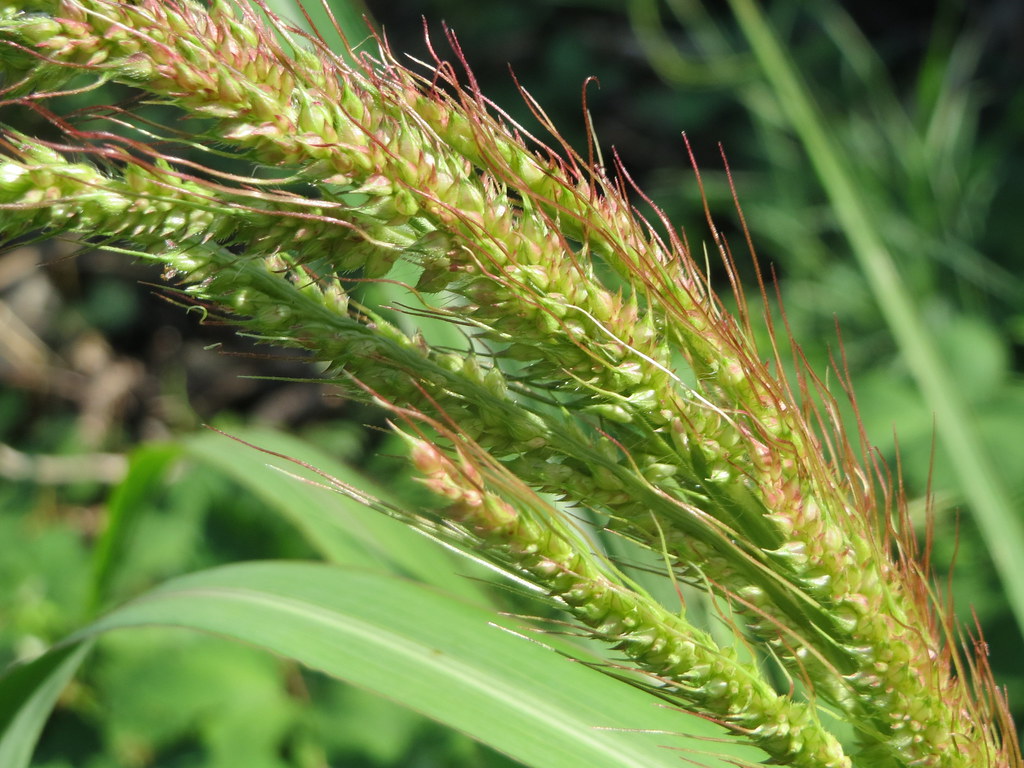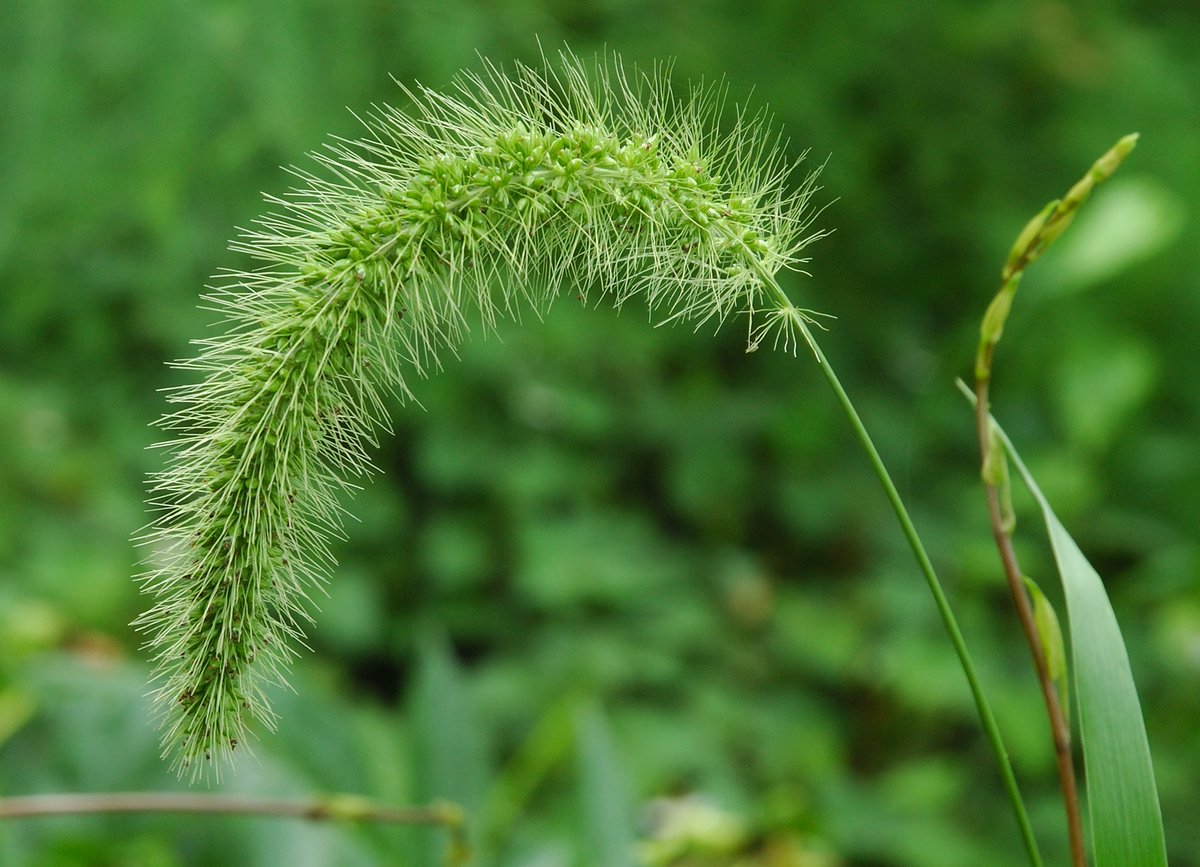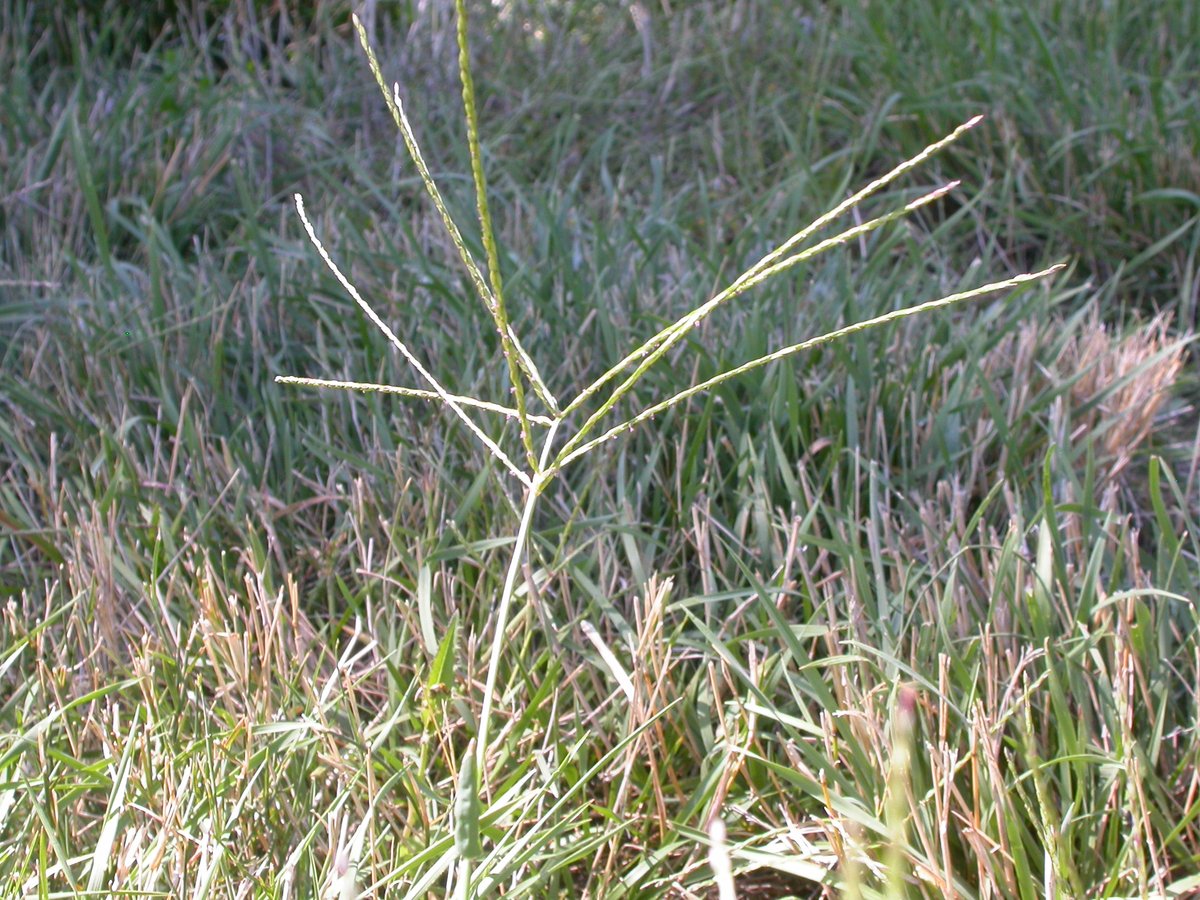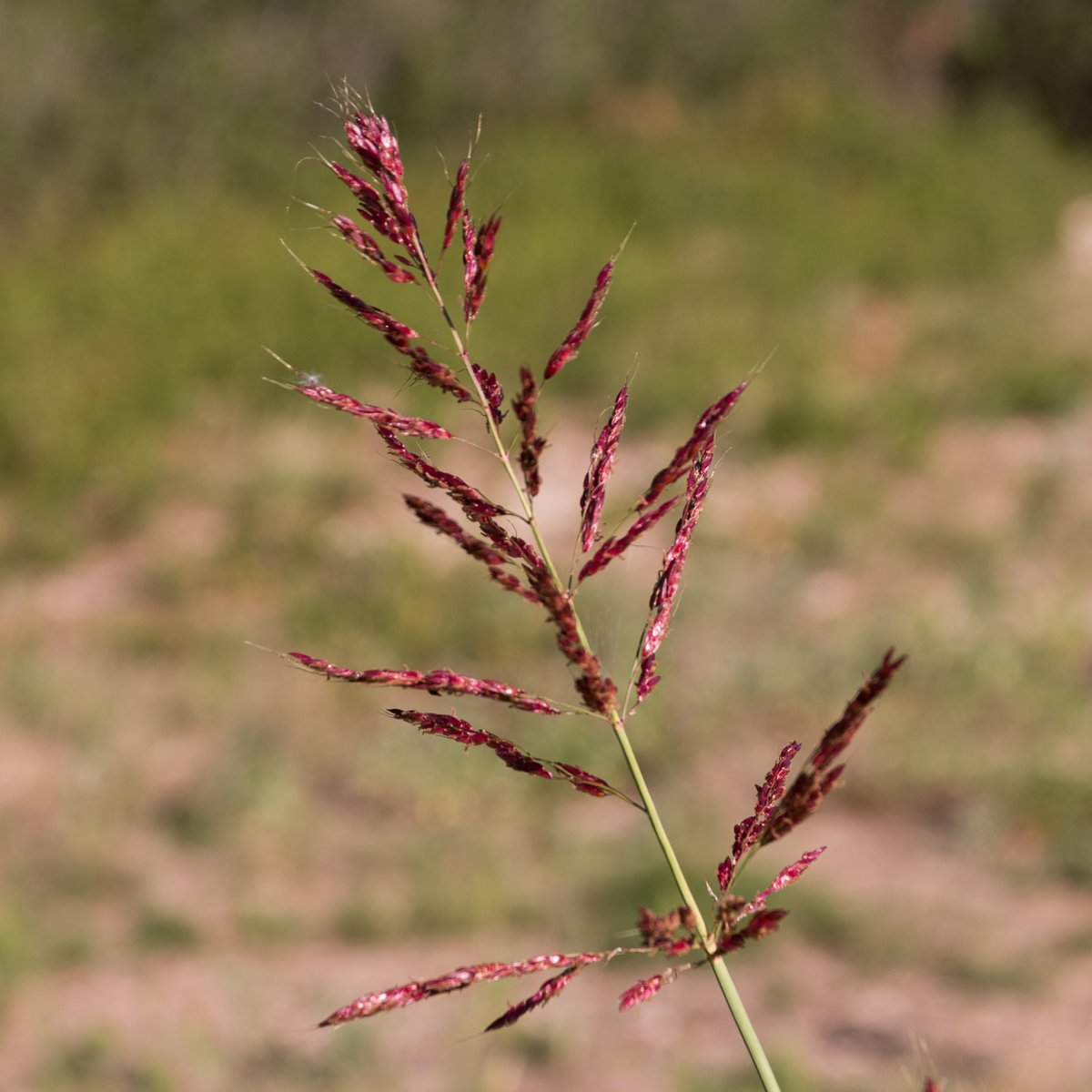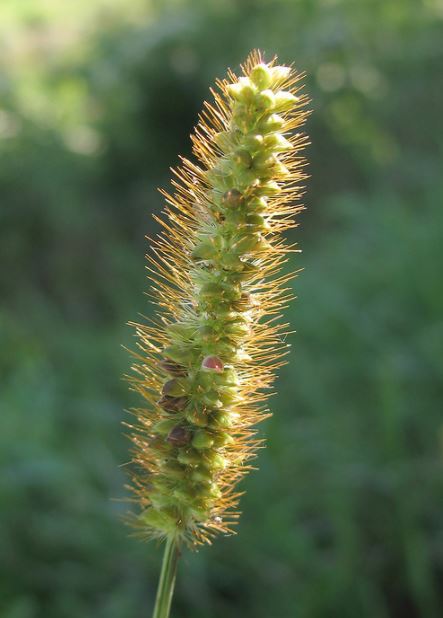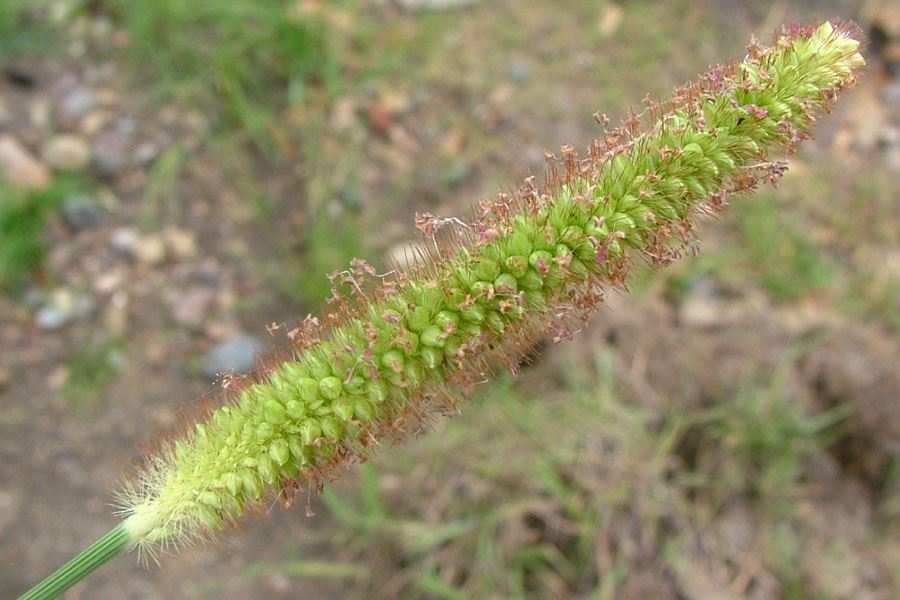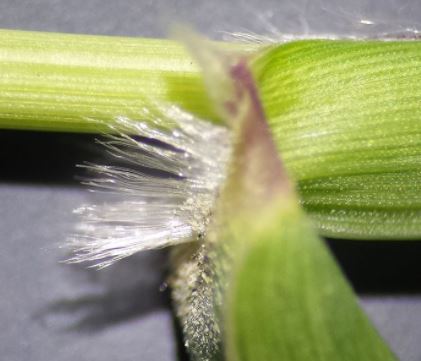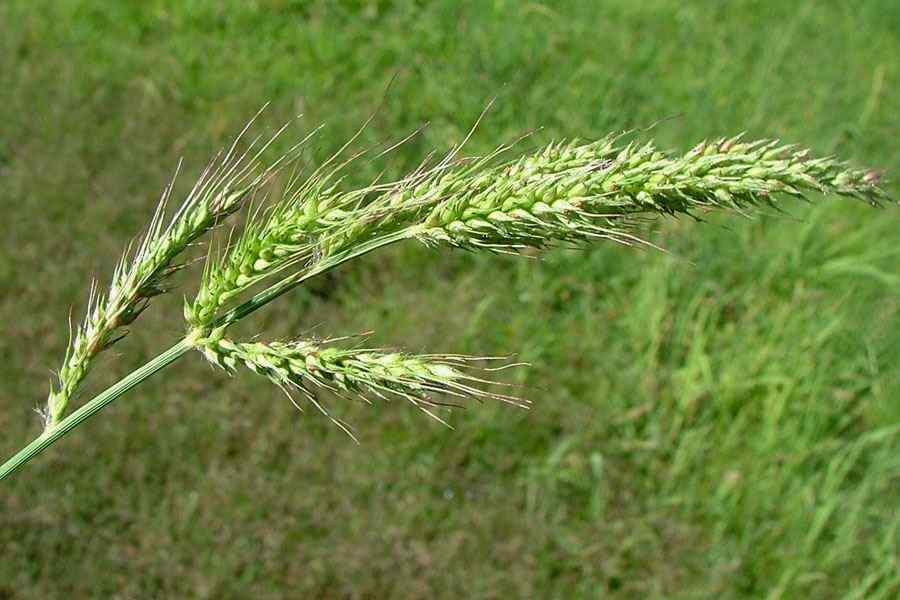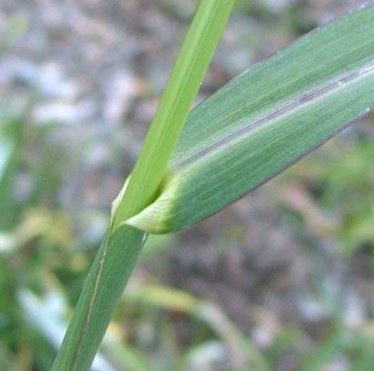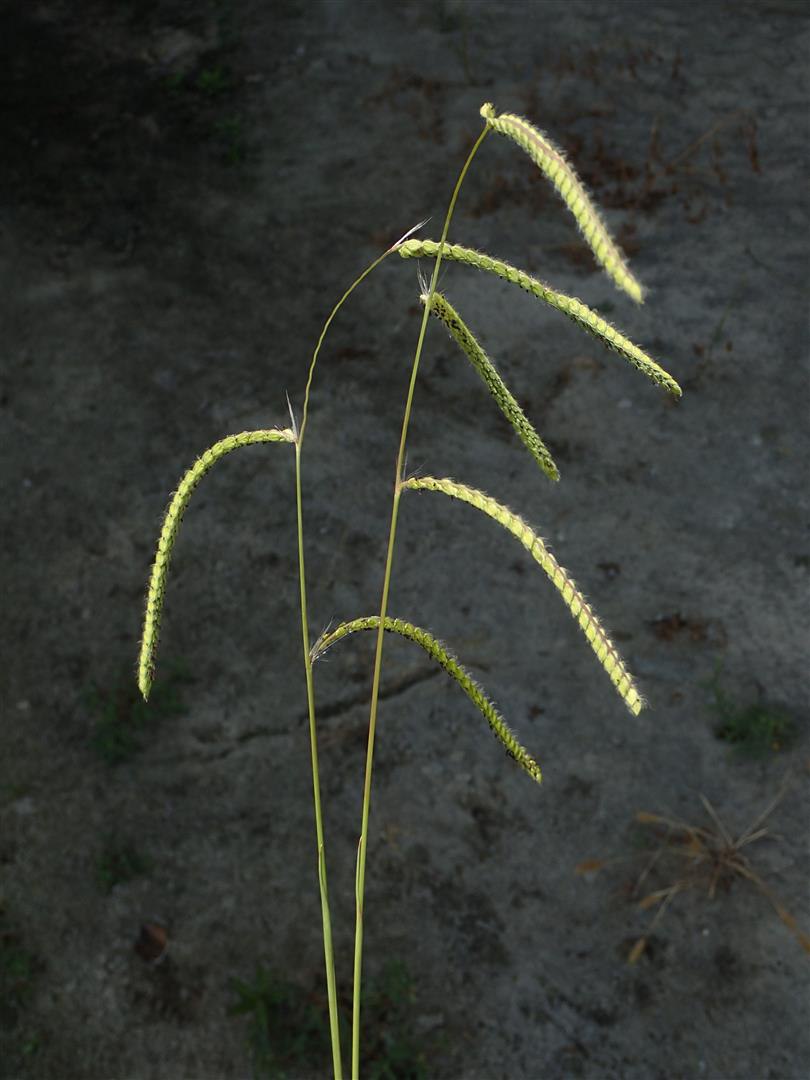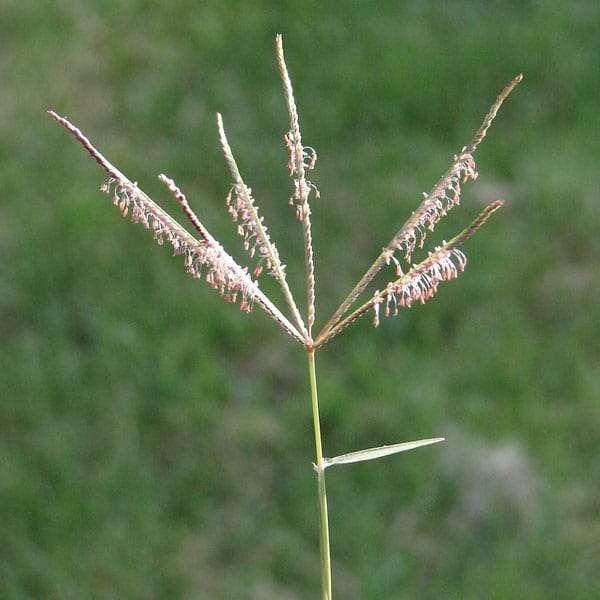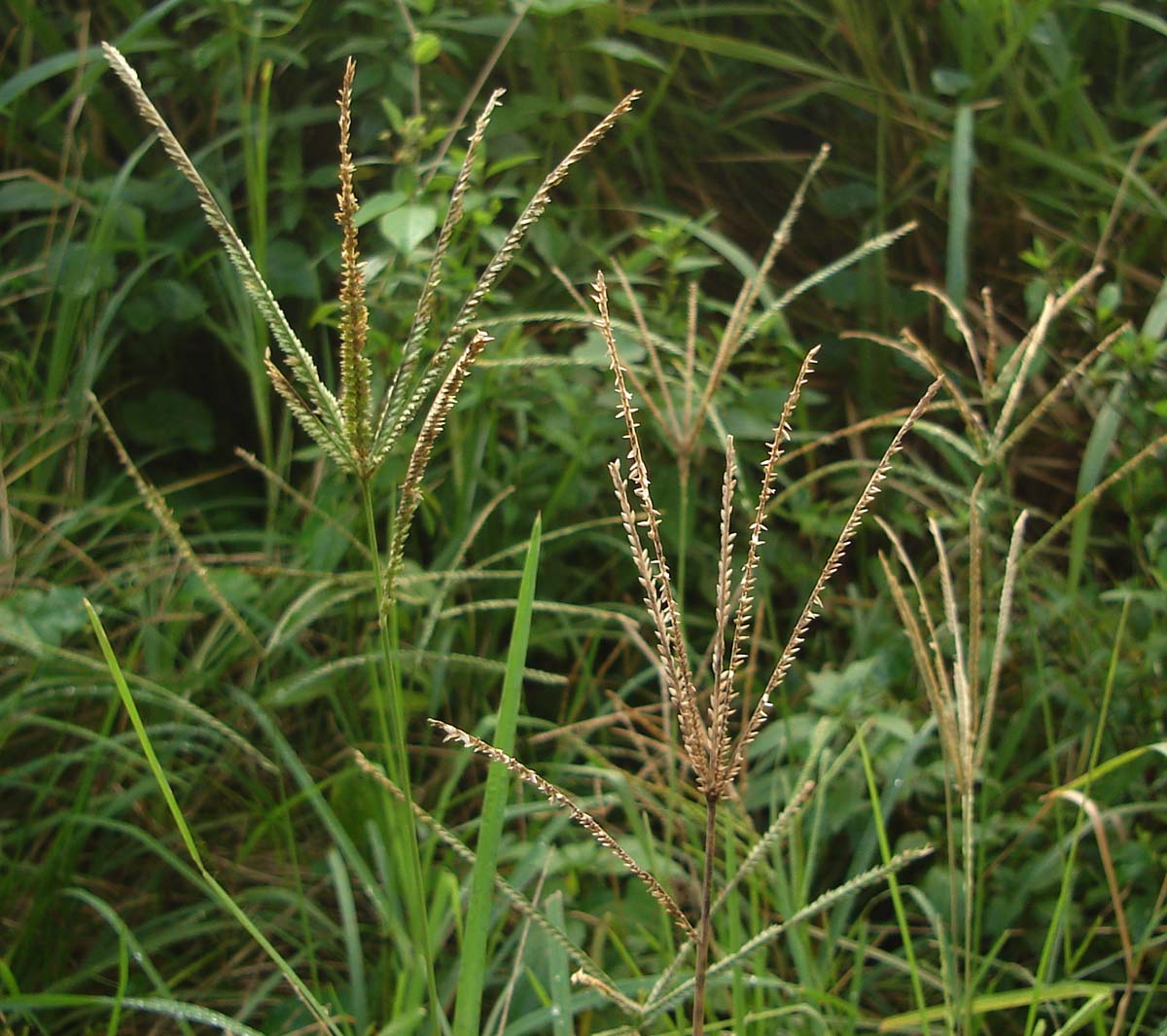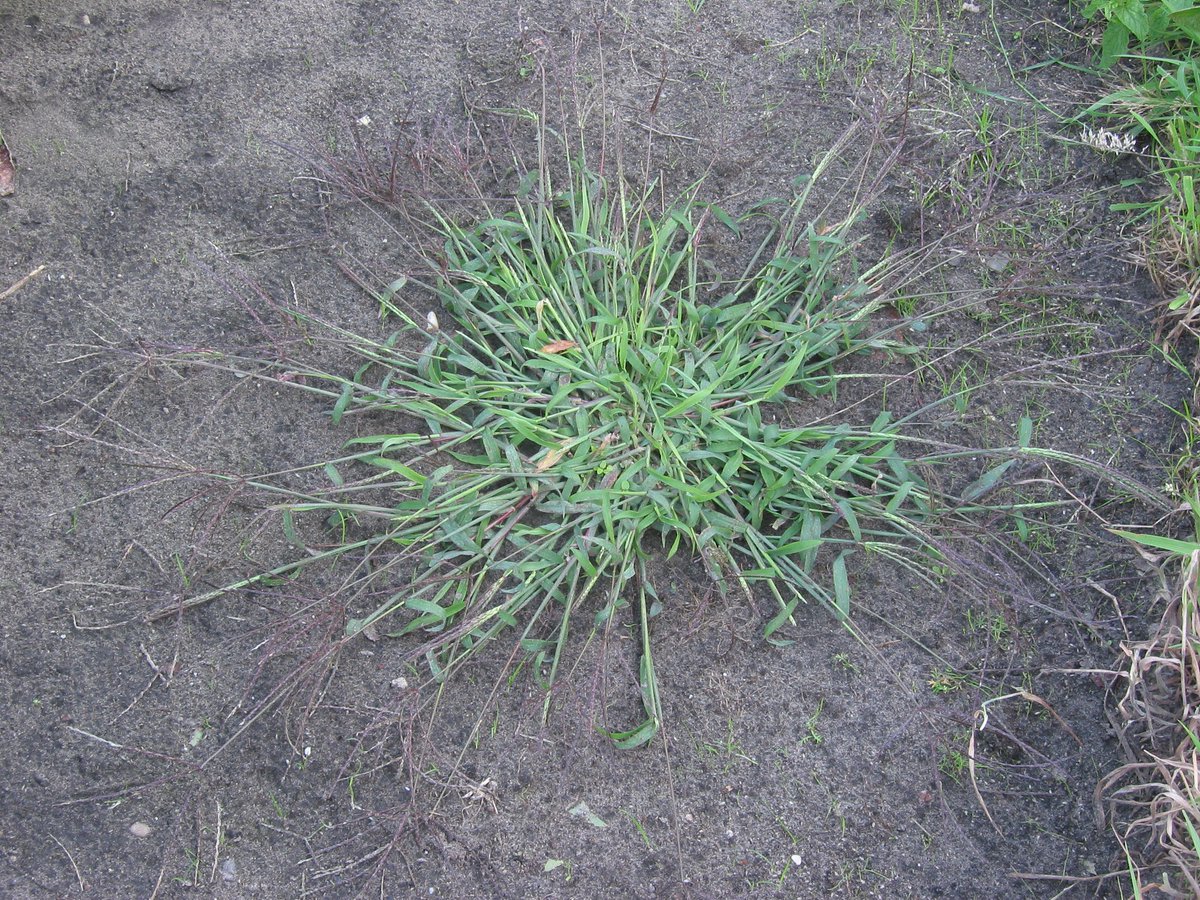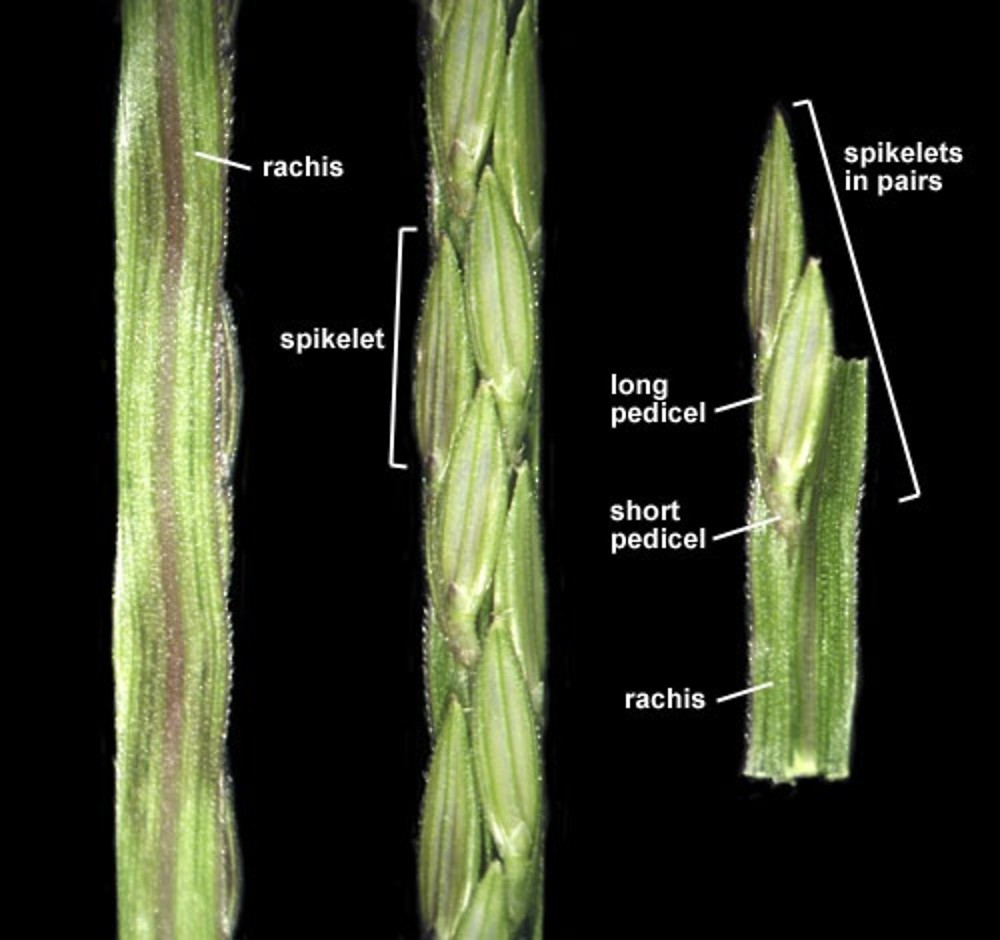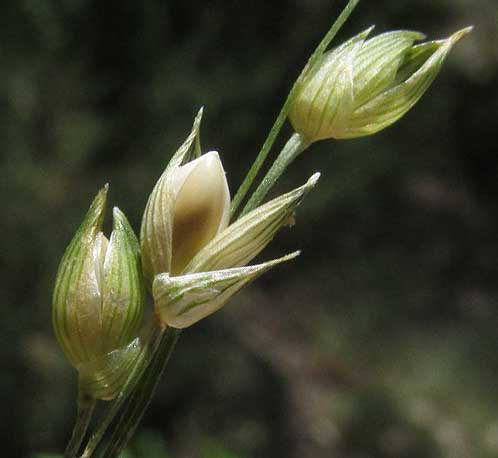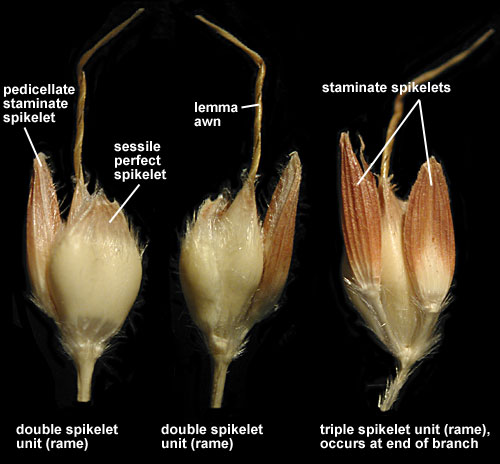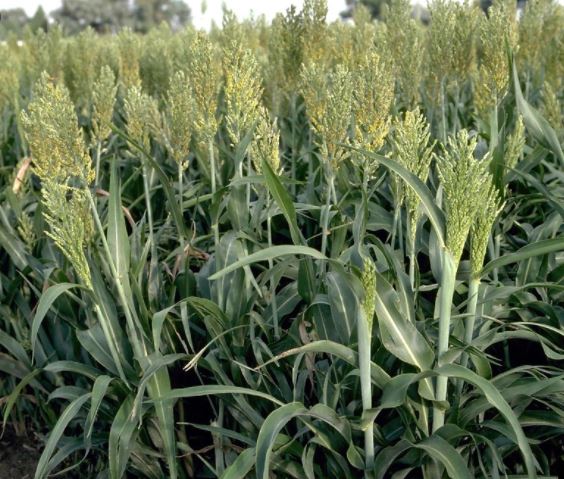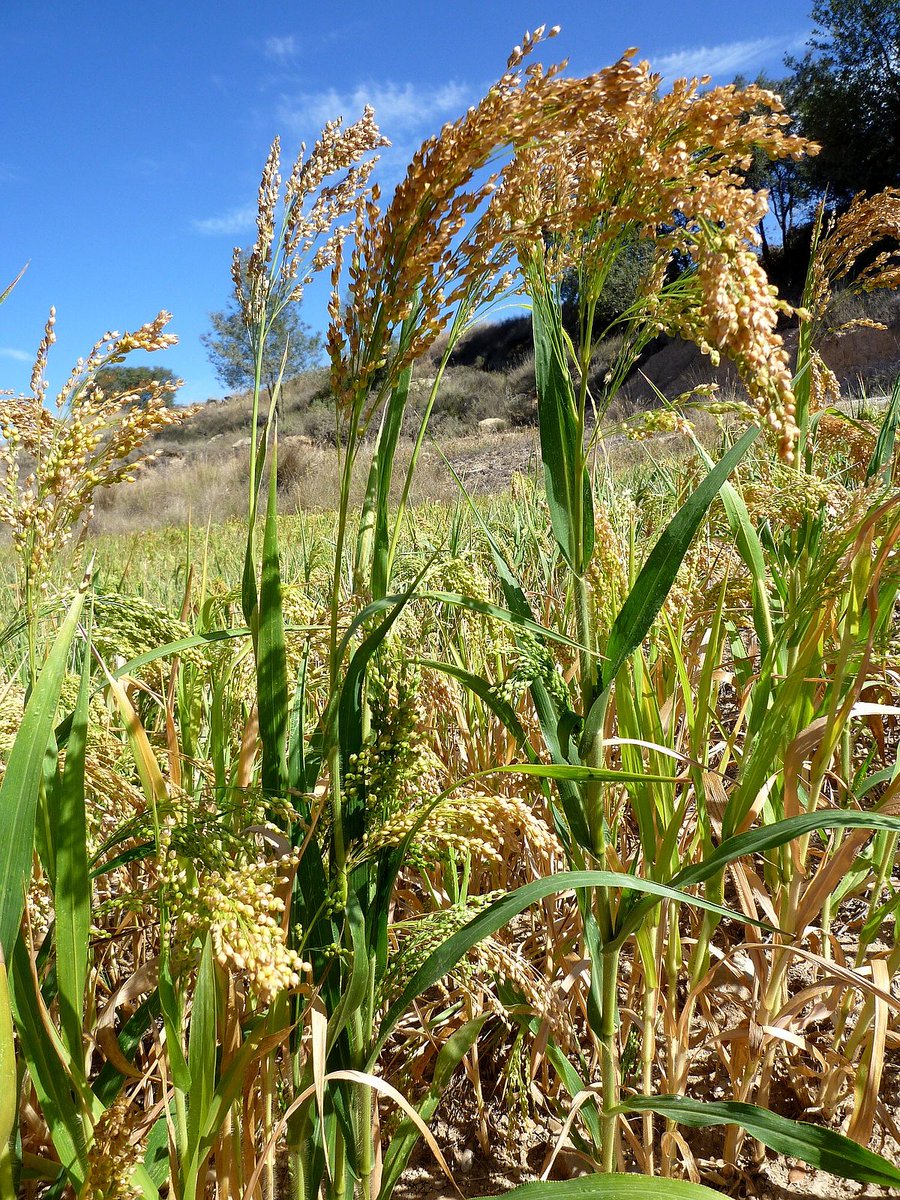The late-season alien grasses are beginning to show themselves. The best place to look for them is in the vicinity of bird-feeders; their seeds are often imported as contaminants of bird-food.
They are nowhere near as daunting as you might think from the long list of alien species, because most of the genera have just one common member. I'll add the ID tips to this thread as I see the species in flower, to keep it as timely as possible.
Setaria pumila is very distinctive. The 6-8 long bristles stick out beyond the spikelets, and give the whole panicle a golden appearance. Confirm the ID by noting that both glumes are much shorter (2.1 and 2.4mm) than the lemma (3.2mm). Ligule a beautiful row of silver hairs.
Cockspur (Echinochloa crus-galli) is really easy. The leaves are more than 10mm wide and there is no ligule (right). The raceme consists of multiple branches, the lowest more than 3cm long (left). A few of the lower lemmas on each branch have long awns (up to 50mm long).
Lots of alien grass genera have their flowers in slender, finger-like inflorescences, and we’ll key these out later, once you’ve mastered the commonest ones.
For the moment, the genus you are most likely to find is Digitaria, and the species will almost certainly be D. sanguinalis. You’ll often find the plant growing flat-pressed to the pavement, so the slender fingers of the racemes are not at all obvious until you have picked it up.
Confirming Hairy Finger-grass (Digitaria sanguinalis) ID is best done at home, because you need to measure the (tiny) spikelets that are pressed closely along the finger (3mm long with scabrid veins on the lemma). The leaf sheaths have long hairs sticking out at 90 degrees.
The two commonest Maize-sized (i.e. huge) alien grasses are both Millets, but they are in different genera: Panicum (left) and Sorghum (right). The first has leaf sheaths that have long spreading hairs all over them, the second has leaf sheaths that are not hairy all over.
The two genera are in completely different parts of the key to Poaceae (Key C: Sorghum; and Key G: Panicum). You need to look closely (x10) at the spikelets: are they all alike (Panicum; left) or is there 1 fat one (bisexual) , and 1 or 2 thin ones (male/sterile, Sorghum; right)?

 Read on Twitter
Read on Twitter